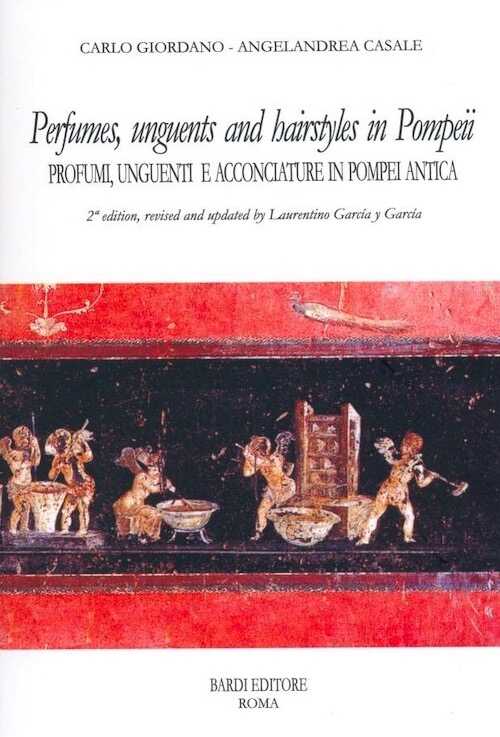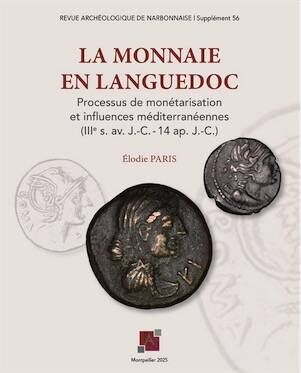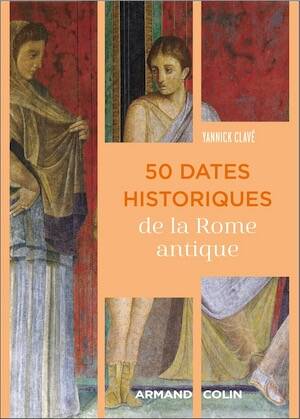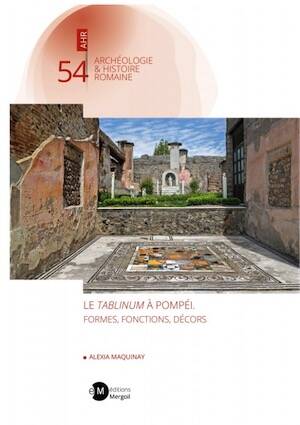- Search
- Advanced search

Perfumes, unguents and hairstyles in ancient Pompeii / Profumi unguenti acconciature in Pompei antica, 2007, 95 p., 56 ill. -
BALDASSARE CONTICELLO Superintending Archaeologist of Pompeii : "This successful essay is the posthumous work of the regretted Professor Carlo Giordano. Since it had been out of print for several years, I asked his co-author, Angelandrea Casale, to revise it and, if needed, update it, but with his usual graciousness he declined my invitation and formally conferred upon me the honor of preparing this second edition. The text is still valid today, in spite of the fifteen years gone by since its first publication, so I limited my editing to revising the form of the information supplied and some minor updating. Notably, I added several historical annotations, a few notes, and some bibliographical references, and replaced some of the figures. As we all know, perfumes are substances emitting an intense and pleasing odor. The simpler ones are the “natural” perfumes of vegetable origin, derived from essential oils that are sometimes produced by the plant in its natural state, as in the case of the oil extracted from the petals of roses or violets, or the leaves of lavender (fig. 1); or come in the form of glucose, as in the case of jasmine and certain tuberous plants, such as the iris. The oils can also be extracted from bark, as in the case of cinnamon, from fruit (bergamot, lemon, orange), and from seeds (anise, almonds), and also from certain resins. The composition of perfumes, however, is usually quite elaborate, since they are prepared in alcoholic solutions and blended with gum, resins, and ointments that are used to “fix” them and thus delay their evaporation. The Romans, who were not familiar with distillation, macerated the raw material – flowers or leaves – in oil. But they knew the power of perfumes very well, and used them as a token of high social status. In Süskind's successful novel Perfume, the main character, Grenouille, affirms that “he who ruled scent ruled the hearts of men,” a statement that is not unconnected to Catullus' verses: “Sed contra accipies meros amores seu quid suavius elegantiusve est: nam unguentum dabo, quod meae puellae donarunt Veneres Cupidesque. Quod tu cum olfacies, deos rogabis, totum ut te faciant, Fabulle, nasum” (“But in return, you will receive an affectionate greeting as well as something that is especially sweet and elegant: for I will give you the perfume that the Venuses and Cupids gave to my beloved. When you smell it, my friend Fabullus, you will ask the gods, to make all of you a nose”) Unguents prepared for external use as salves contained odoriferous essences and were used as perfumes. Egyptian women used them in abundance in the form of cones placed on the head, which, as they slowly liquefied onto the hair, simply by the effect of body heat, impregnated the hair, neck, and arms with intense and inviting scents. Embalmers used them to preserve corpses as long as possible. Their beneficial effects also conquered Roman matrons, who used spoons and spatulas to scoop up and spread the precious substances preserved in pyxides and boxes. Luxury and its most conspicuous manifestations in fashion and everyday practices - which had previously complied with the ideal of sober austerity of rural Latium - spread in Rome and the Roman world after the conquest of Greece, Asia Minor and, above all, Egypt, in the second and first centuries BC. During the same period, personal and collective hygiene improved thanks to the creation of baths (thermae), so cherished by the Romans. The rich now had baths in their houses, and everybody could go to the public baths. The essay that follows does not deal with the rapid spread of gold ornaments and jewelry, so dazzlingly documented by the excavation of the Vesuvian cities and villas; nor with the increasing extravagance in the use of precious cloth. It concentrates, instead, on the production and use of perfumes and unguents, which the Oriental emporia of Delos and Alexandria had previously monopolized, being at once their main producers and consumers. Of course, Italy and the Roman world had been acquainted with these luxuries, but they were reserved for religious purposes rather than being employed for personal and everyday use. After the above-mentioned conquests, the diffusion and demand for these products was such that their massive importation engendered an economic crisis. As early as the first decades of the Empire, however, in the first half of the first century BC, Campania, launched an increasing competition with Oriental imports. The region boasted fine flower crops, especially at Capua, Neapolis, and Paestum, and it is from flowers that most of the essences of perfumes and unguents are extracted. The fertility of its soil and the mildness of its climate made Campania Felix an Eden, a natural hothouse where flowers thrived. A renowned painting from Stabiae echoes this sense of an eternal spring, which the ancient Romans experienced in its pristine fullness and integrity (fig. 2). The region's long-standing and lucrative olive and grape production, both of which, especially the latter, yield basic substances for perfume making, also favored the flourishing of the perfume trade. Even the containers for the essences, the famous unguentaria - especially glass ones - were produced in great quantities in Campania. Finally, the importance gained by the port of Pozzuoli also played a significant role in this process. These aspects are documented at Pompeii, too, where we find evidence both of a widespread use of flowers (figs. 3-5) and of the existence of unguentaria and oficinae where perfume was sold. Carlo Giordano's elegant prose will make the reading of this essay pleasant not only for the many women who will find in its pages ideas and curiosities that still retain their interest and validity today - when the words “herbalist”, “phytotherapy”, and “aromatherapy”, often attested in the works of classical and medieval authors, have returned in fashion – but also to the specialist, who will appreciate Giordano's wealth of quotations from classical authors and his accurate information about Pompeian archaeological finds. Laurentino García y García PREFACE Prof. Carlo Giordano was one of the first people I met when I first arrived at the Superintendency of Pompeii. I soon came to appreciate his great humanity. People immediately took to him for his affability, his wit, his ability to put everyone immediately at their ease with the offer of a cup of coffee or a sugar drop, or with a prompt and always appropriate quote of a poet or an ancient graffito. He had an endless stock of those quotes, bearing witness to his wide-ranging knowledge and long familiarity with Roman literary sources and the Pompeian epigraphic record. Indeed, this was his vocation as a scholar: not so much archaeology intended as the study of monuments and their decorative programs, but rather the study of Pompeian and, more in general, Roman “antiquity”, i.e., the reconstructing of various aspects of everyday life on the evidence of the classics, as well as the more ephemeral, but also more spontaneous testimonies provided by the writings and graffiti traced on the walls of Pompeii. His scholarly interest in the everyday life of bankers, craftsmen, magistrates, and the common people was undoubtedly a natural consequence of his humanity, of his interest in Man. The volume I have the pleasure of introducing here is a study in the same vein. It was written with the valuable assistance of Giordano's collaborator Angelandrea Casale, without whom this work would never have seen the light. Casale must also be given credit for working in perfect agreement with the author. The book provides an enjoyable picture of female vanity, but also, to a lesser extent, of men's. As was in his style, he did not draw merely on archaeological data, but also, and above all, on his knowledge of literary and epigraphic sources, which are very frequently cited in the text. Still, these pages remain easy to read and enjoyable, because the testimonies and references are not presented in an arid and pedantic tone: on the contrary, they are dropped in the text in a totally natural way, almost casually, without breaking its spontaneous and captivating flow. The text also owes its charm to the fact that Carlo Giordano usually portrays the whims and caprices of Pompeian matrons with the same serene detachment and benign irony that were his trademark, and which should stand as an example for all of us".
Référence : 36131.
English, Italian
45,00 €
In the same Epoch
New

La Monnaie en Languedoc. Processus de monétarisation et influences Méditerranéennes (IIIe S. av. J.-C. 14 ap. J.-C.), (56e Supplément RAN), 2025, 328 ...
Réf : 57829.
French
40,00 €
New

22,00 €


